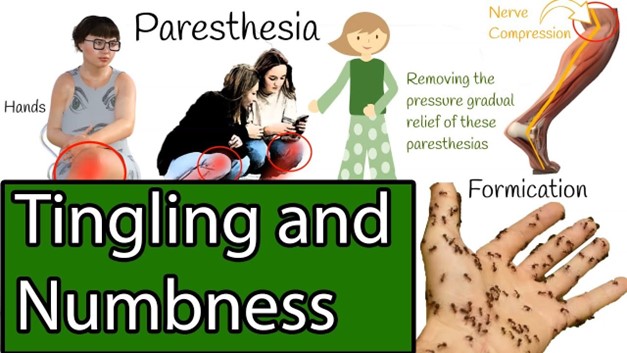The nurse is doing neurovascular checks on a child who has had a cast applied to treat a fracture.
The nurse observes for diminished or absent sensation and numbness or tingling. In doing this, the nurse is monitoring which symptom?
Pain.
Paralysis.
Paresthesia.
Pallor.
The Correct Answer is C
Paresthesia refers to an abnormal sensation of the skin, such as numbness, tingling, or burning.
When the nurse observes for diminished or absent sensation and numbness or tingling, they are monitoring for paresthesia.

Choice A is not correct because pain is not the symptom being monitored in this case.
Choice B is not correct because paralysis is not the symptom being monitored in this case.
Choice D is not correct because pallor refers to the paleness of the skin and is not the symptom being monitored in this case.
Nursing Test Bank
Naxlex Comprehensive Predictor Exams
Related Questions
Correct Answer is D
Explanation
Involution is the process by which the uterus returns to its nonpregnant size and function after delivery.
Choice A is not correct because evolution refers to the gradual development of something.
Choice B is not correct because decrement refers to a reduction in size or value.
Choice C is not correct because progression refers to the process of developing or moving gradually toward a more advanced state.
Correct Answer is C
Explanation
A nurse caring for a toddler who had a cast applied 2 hours ago due to multiple fractures of the right hand should report immediately to the charge nurse if the fingers on the right hand have a capillary refill of 4 seconds.
This could indicate that there is a problem with circulation.
Choice A is not an answer because it is not unusual for a child to not attempt to move her right arm or fingers after having a cast applied.
Choice B is not an answer because it is not unusual for the fingertips of the right hand to be swollen and bruised after having a cast applied.
Choice D is not an answer because it is not unusual for a child to not keep their arm elevated on a pillow after having a cast applied.
Whether you are a student looking to ace your exams or a practicing nurse seeking to enhance your expertise , our nursing education contents will empower you with the confidence and competence to make a difference in the lives of patients and become a respected leader in the healthcare field.
Visit Naxlex, invest in your future and unlock endless possibilities with our unparalleled nursing education contents today
Report Wrong Answer on the Current Question
Do you disagree with the answer? If yes, what is your expected answer? Explain.
Kindly be descriptive with the issue you are facing.
